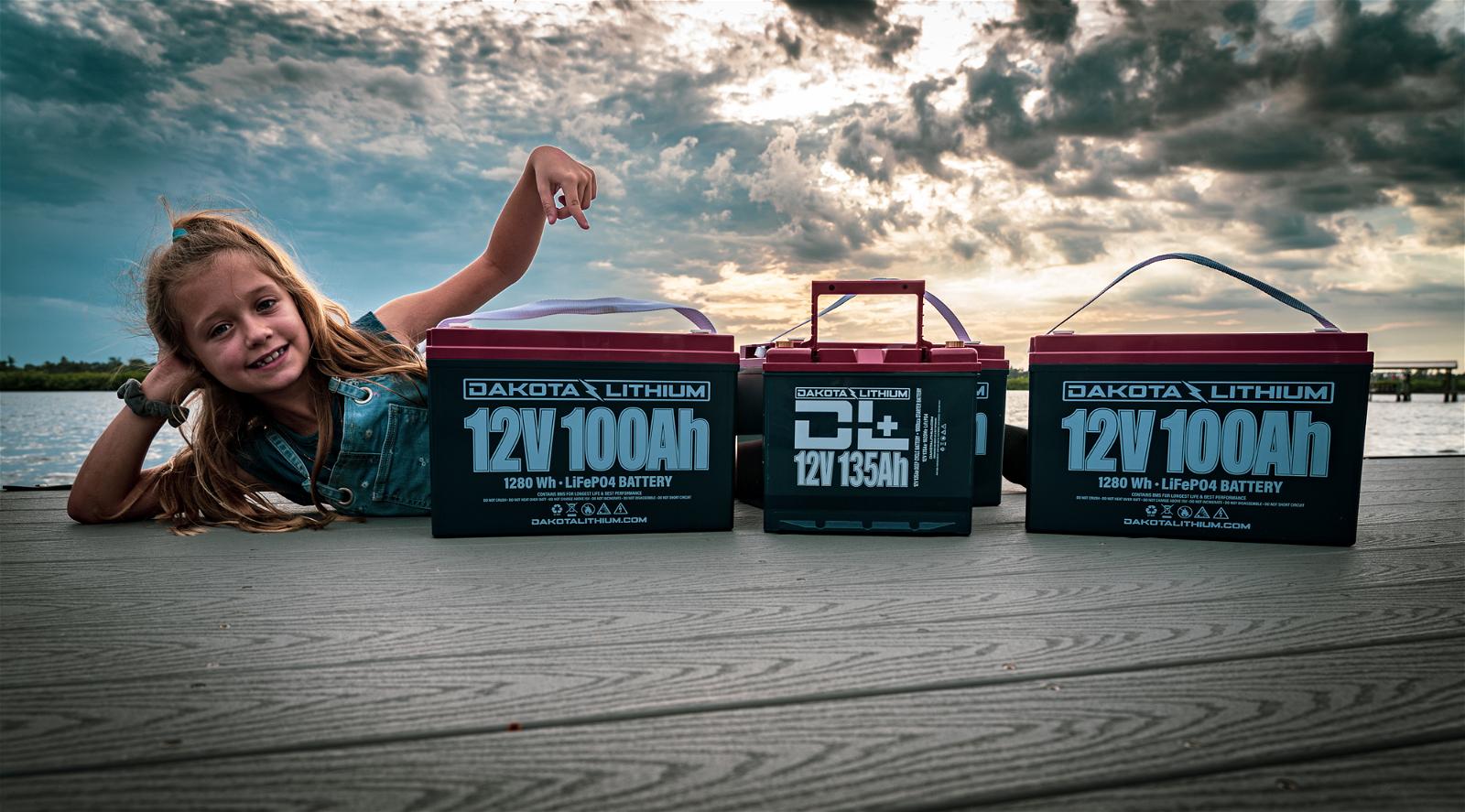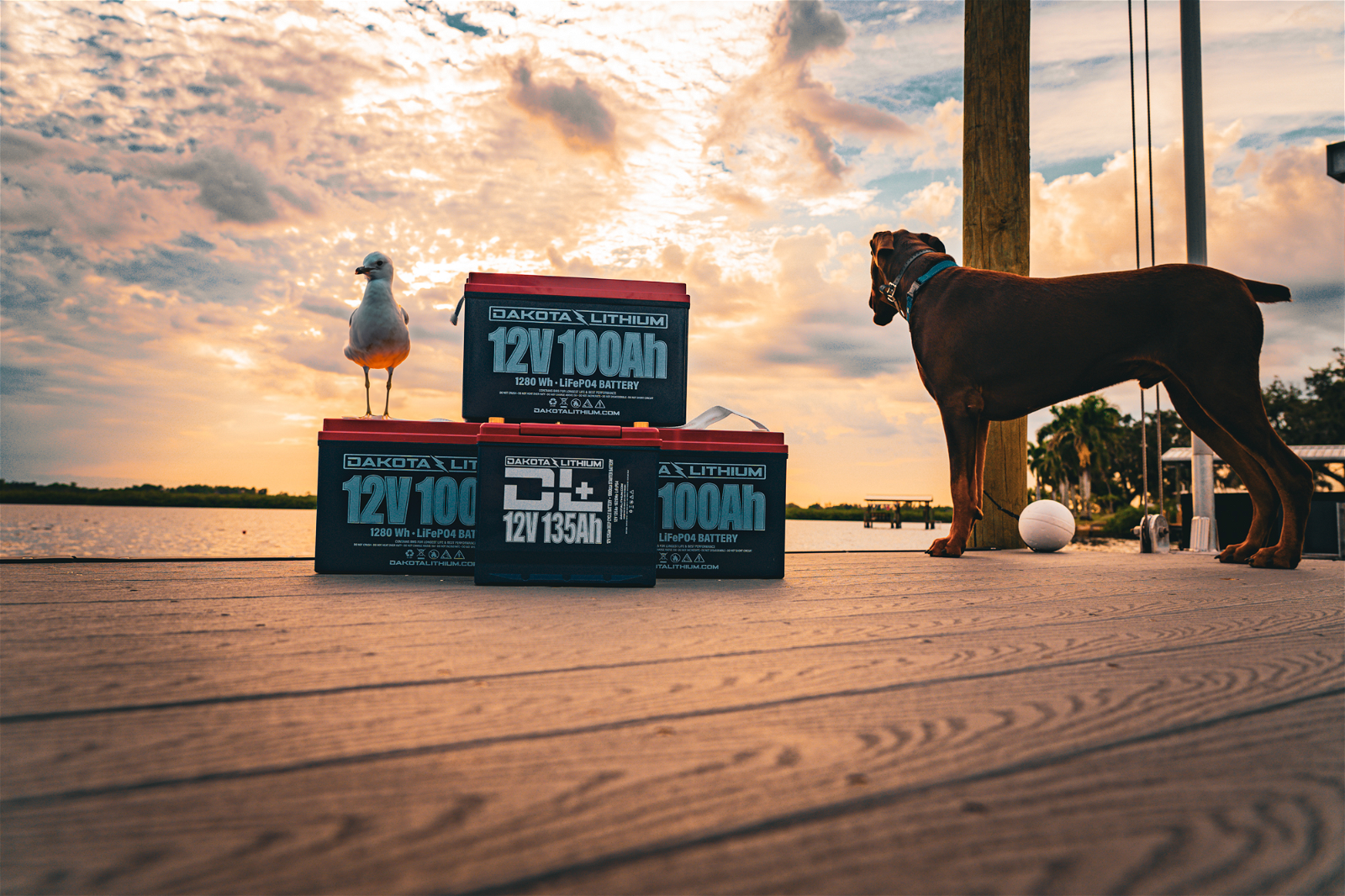

Lithium batteries, often referred to as lithium-ion (Li-ion) batteries or lithium-polymer (LiPo) batteries, are a type of rechargeable battery. In many applications, they have largely replaced older rechargeable battery technologies like nickel-cadmium (NiCd) and nickel-metal hydride (NiMH) batteries. They offer a significant advancement in energy storage technology with high energy density and long cycle life.

Josh Taylor – SaltyScales is Powered By: Dakota Lithium

Josh Taylor – SaltyScales is Powered By: Dakota Lithium
A lithium battery is a type of rechargeable battery that uses lithium as one of its core components within the electrochemical cell.
Lithium batteries work on the same principles as lead-acid batteries but with different materials. Every type of battery has the same components – cathode, anode, separator, electrolyte, and a positive and negative collector. In a lead-acid battery, the anode is made from lead, and the cathode is made from lead oxide. In a battery, the anode is made from carbon, and the cathode is the source of the lithium ions.
There are different types of lithium batteries:
Lithium-ion (Li-ion) Batteries – widely used in consumer electronics such as smartphones, laptops, tablets, and digital cameras.
Lithium Polymer (LiPo) Batteries – commonly used in remote-controlled devices, drones, and radio-controlled vehicles due to their flexibility in shape and lightweight nature.
Lithium Iron Phosphate (LiFePO4) Batteries – used in applications where safety and longevity are critical, such as electric vehicles (EVs), solar energy storage systems, marine batteries and power tools. Specialty types include Dakota marine lithium batteries.
Lithium Manganese Oxide (LiMn2O4) Batteries – These are commonly found in power tools, medical devices, and specific consumer electronics.
Lithium Cobalt Oxide (LiCoO2) Batteries – have been used extensively in portable electronics, but they have become less common in recent years due to safety concerns and the development of alternative chemistries.
Lithium Nickel Cobalt Manganese Oxide (LiNCM or NMC) – Batteries are often used in hybrid and electric vehicles and stationary energy storage systems.
Lithium Nickel Cobalt Aluminum Oxide (LiNCA or NCA) Batteries – are commonly used in high-performance applications, including some electric vehicles.
Lithium Titanate (Li4Ti5O12) Batteries – are used in specific applications where fast charging and long cycle life are essential, such as buses and grid energy storage.
Lithium-ion batteries have a wide variety of applications, and their ideal environment varies depending on their specific chemistry and intended use.

Dakota Lithium 12v 100Ah Deep Cycle Batteries with DL+ 12v 135Ah is the perfect boat package J. Taylor – SaltyScales
Temperature: Lithium-ion batteries perform best at moderate temperatures, typically between 15°C to 25°C (59°F to 77°F). Extreme temperatures, both hot and cold, can significantly affect battery performance and lifespan. High temperatures can lead to thermal runaway and reduced capacity, while extreme cold can cause reduced discharge capacity and slower chemical reactions.
Humidity: Lithium-ion batteries are generally not very sensitive to humidity levels within the typical operating range of most environments. However, it’s essential to protect batteries from moisture and water to prevent short circuits or other damage.
Ventilation: Adequate ventilation is essential, especially for large lithium-ion battery packs, Dakota Marine batteries, or systems like those found in electric vehicles. Good ventilation helps dissipate heat generated during charging and discharging, extending the battery’s life and preventing thermal issues.
Avoid Direct Sunlight: Keeping lithium-ion batteries away from direct sunlight or other sources of intense heat is advisable, as this can increase the operating temperature and cause damage or safety hazards.
Avoid Overcharging and Deep Discharging: Lithium-ion batteries should be charged within their recommended voltage and current limits to prevent overcharging, which can lead to overheating and cell damage. Similarly, deep discharging should be avoided as it can reduce the battery’s lifespan.
Storage Conditions: If you need to store lithium-ion batteries for an extended period, it’s best to do so in a cool, dry place with a charge level of around 50%. Keeping them fully charged or fully discharged for extended periods can lead to capacity degradation.
Impact and Mechanical Stress: Protect batteries from physical effects and mechanical stress, as these can damage the internal components and lead to safety hazards.
Voltage and Current Control: Lithium-ion batteries should be used with appropriate chargers and devices that control voltage and current to ensure safe and efficient charging and discharging.
Quality of Cells: Using high-quality lithium-ion cells from reputable manufacturers is crucial to ensure safety and performance. Cheap or counterfeit cells may pose a higher risk of safety issues.
Monitoring and Maintenance: Regularly monitor the condition of lithium-ion batteries, especially in critical applications. A maintenance and monitoring plan can help detect issues early and prevent unexpected failures.
It’s important to note that different types of lithium-ion batteries, such as those used in consumer electronics, electric vehicles, and stationary energy storage systems, may have specific requirements and considerations. Always follow the manufacturer’s recommendations and guidelines for the specific battery you are using to ensure its safe and optimal operation.

DL+ 12v 135Ah J. Taylor – SaltyScales
Safe handling is crucial to prevent accidents, fires, and other hazards. Lithium batteries are commonly found in everyday devices like smartphones, laptops, and power banks, as well as in larger applications like electric vehicles and renewable energy systems. Here are some essential tips for safe handling.
Read the Manufacturer’s Instructions: Start by reading and following the manufacturer’s guidelines and safety instructions provided with the battery and the device it powers.
Avoid Physical Damage: Lithium batteries can become dangerous if physically damaged, so avoid dropping, puncturing, or crushing them. This can cause internal shorts and lead to fires or explosions.
Store Properly: When not in use, store lithium batteries in a cool, dry place away from direct sunlight and extreme temperatures. Use a plastic or non-conductive container to prevent contact with metal objects, which could cause a short circuit. Extreme heat and cold can damage lithium batteries. Do not expose them to temperatures below -20°C (-4°F) or above 60°C (140°F).
Charge Safely: Use only the charger provided by the device manufacturer or a reputable third-party charger specifically designed for your device and battery type. Charge your device on a non-flammable surface and avoid overcharging or leaving the battery on charge for extended periods. Never charge a damaged or swollen battery.
Use the Right Voltage: Ensure that the charger or power source matches the voltage requirements of the battery and device. Using an incorrect charger can damage the battery and create safety risks.
Monitor Charging: Keep an eye on your device while it’s charging. Unplug the device immediately if you notice any unusual heat, smoke, or strange odors
Transport Safely: Follow transportation regulations when traveling with lithium batteries, especially larger ones. Most airlines, for example, have restrictions on carrying spare lithium batteries in checked luggage due to the risk of fire.
Dispose of Properly: Never dispose of lithium batteries in the trash or incinerate them. Recycle them at designated recycling centers or drop-off locations that accept hazardous waste.

Josh Taylor – SaltyScales
Prevent Short Circuits: When storing spare lithium batteries, ensure they don’t come into contact with metal objects like coins, keys, or other batteries.
Use Protective Cases: If you’re carrying spare lithium batteries in your bag or pocket, do not carry them loose. Use protective cases or covers to prevent accidental short circuits.
Avoid Over-Discharge: Some devices and chargers have protection mechanisms to prevent over-discharging a lithium battery. Over-discharging can damage the battery and create safety risks.
Educate Yourself: Stay informed about the specific guidelines for the type of lithium battery you are dealing with, as there may be variations in handling and safety instructions.